PRIMORDIAL RITUAL Horseshoe Crabs Struggle and Spawn on the Delaware Bay
Summoned by the New and Full Moons in May and June, hordes of living fossils congregate on the shores of the Mid Atlantic to spawn their next generation. Migratory birds depend on the Horseshoe Crab for survival and these relatively unsung animals may have, literally, saved your life. Not only can you enjoy this event but you can help them succeed as well.
Misunderstood Monsters
I was terrified of horseshoe crabs when I was a boy. A walking helmet with a giant stinger and multiple pinching legs with which to attack me, it was a monster. None of this is correct, they are completely harmless and quite endearing.
That “stinger” is a somewhat fragile rudder and those pincers can do nothing but give you a firm handshake. They are not even crabs. They are more closely related to spiders and scorpions yet lack any of their distant cousins defensive or offensive attributes. Horseshoe Crabs are very gentle creatures who have no intent on causing you any harm, nor do they posses the ability to do so . The only way I am aware that a horseshoe crab can injure you is by stepping barefoot on the spines of their carapace. I have done this on a deceased specimen in the dark, it hurts. Just watch your step and uh…don’t blame the Horseshoe Crab for your clumsiness while night walking barefoot on the beach.
Blood Harvest, Bait, Fertilizer and Consequences
If there is a monster in this scenario, it is us. These creatures had thrived for 450 million years, changing very little over that evolutionary period. This makes them one of the planet’s oldest residents. The tides turned for the worse in the late 19th Century when the Horseshoe Crab became a commodity.
Millions were harvested and ground for fertilizer until the practice largely subsided in the 1970’s with the adoption of artificial alternatives. They were used as bait for conch and eel fishing, on an industrial scale, beginning in the 1990’s. Though the practice continues, some recently enacted partial and full moratoriums have begun to curb the slaughter.
In more recent history it is their blue blood which has made them a target. A special clotting agent in their blood is used to detect life threatening bacteria in injectables, vaccines, implanted medical devices, IV’s and more. If you’ve seen the doctor for more than a checkup in the past couple of decades, the Horseshoe Crab ensured your safety.
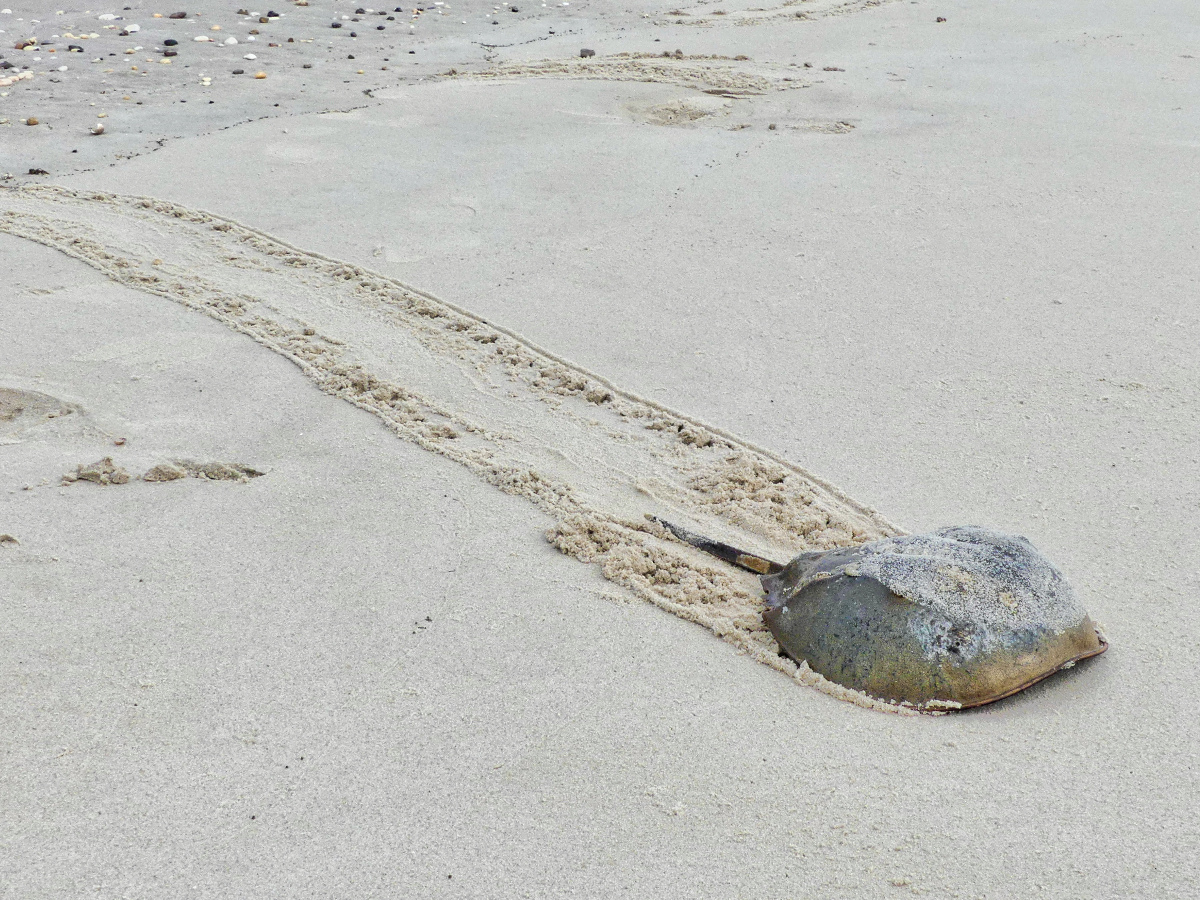
Pricing varies but a single gallon of the blue stuff can fetch up to $60,000. Sixty, Thousand, Dollars. That’s quite a meal ticket for the firms and contractors who reap the blood harvest. The animals were once drained dry and discarded but the process has been modified with the intent of protecting their golden goose and to provide an air of conservation.
Annually, 600,000 captured horseshoes are now drained for up to 30% of their blood. The 70% or so that survive the ordeal are then supposedly released. No one knows for certain how many of the freed crabs survive or recover enough to spawn. Reintroduction is not well monitored or enforced. Their numbers are now threatened.
This haphazard accommodation would not have been implemented if left to concern for the Horseshoe Crab alone. They still appeared every year in seemingly great but sparser numbers. Something else was missing. The density of other annual visitors began to drop dramatically, the Red Knot and other Migratory Birds. The discarded eggs of the Horseshoe Crab are a staple food source for many migratory birds. The egg supply diminished, the birds lacked fuel for their journey and their populations dwindled. If it had not been for the emptying skies, we would not have known that the waters were was also being relieved of this most ancient inhabitant. Here we are today.
The Big Show
Despite the struggles and decreasing numbers of both the Horseshoes and Migratory shore birds, spawning season is still a unique spectacle in the natural world. During the Full and New Moons in May and June, the largest population of Horseshoes in the world tumble upon the Delaware Bay shore with the high tide.
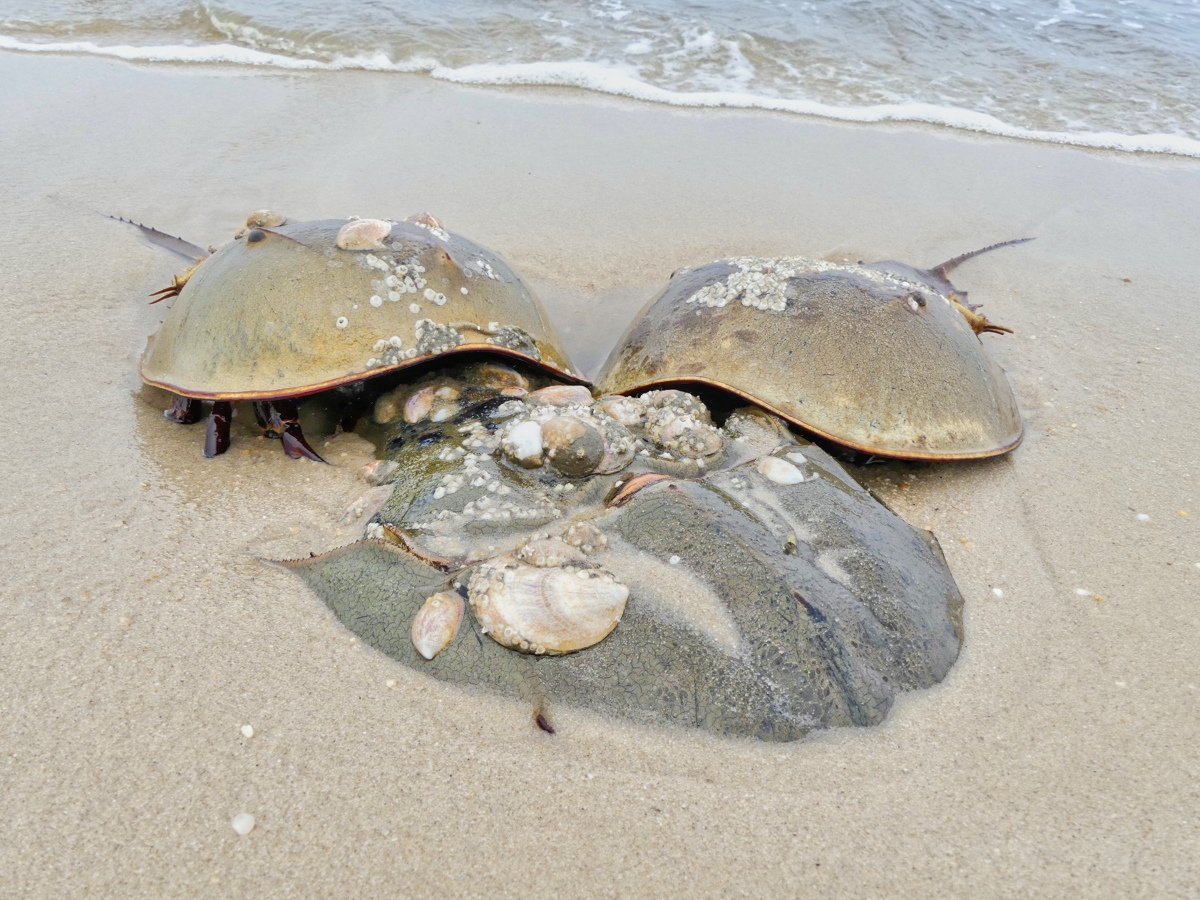
We selected Higbee Beach in Cape May, New Jersey as the main venue for our 2018 observation. Though it did not promise the highest concentration, the beach is more accessible than other hotspots and no sections were quarantined for the protection of breeding birds. We wanted to be close to the Horseshoes. We referenced the tide charts for high tide and timed our arrival accordingly.
From the secluded parking lot, we made a mad dash through the forested dunes for the beach head and saw….nothing. Only a few Horseshoes and scavenging birds were about. We feared a repeat of our first attempt in 2017 on the Delaware side, when a cold spring disrupted the May portion of the breeding cycle.
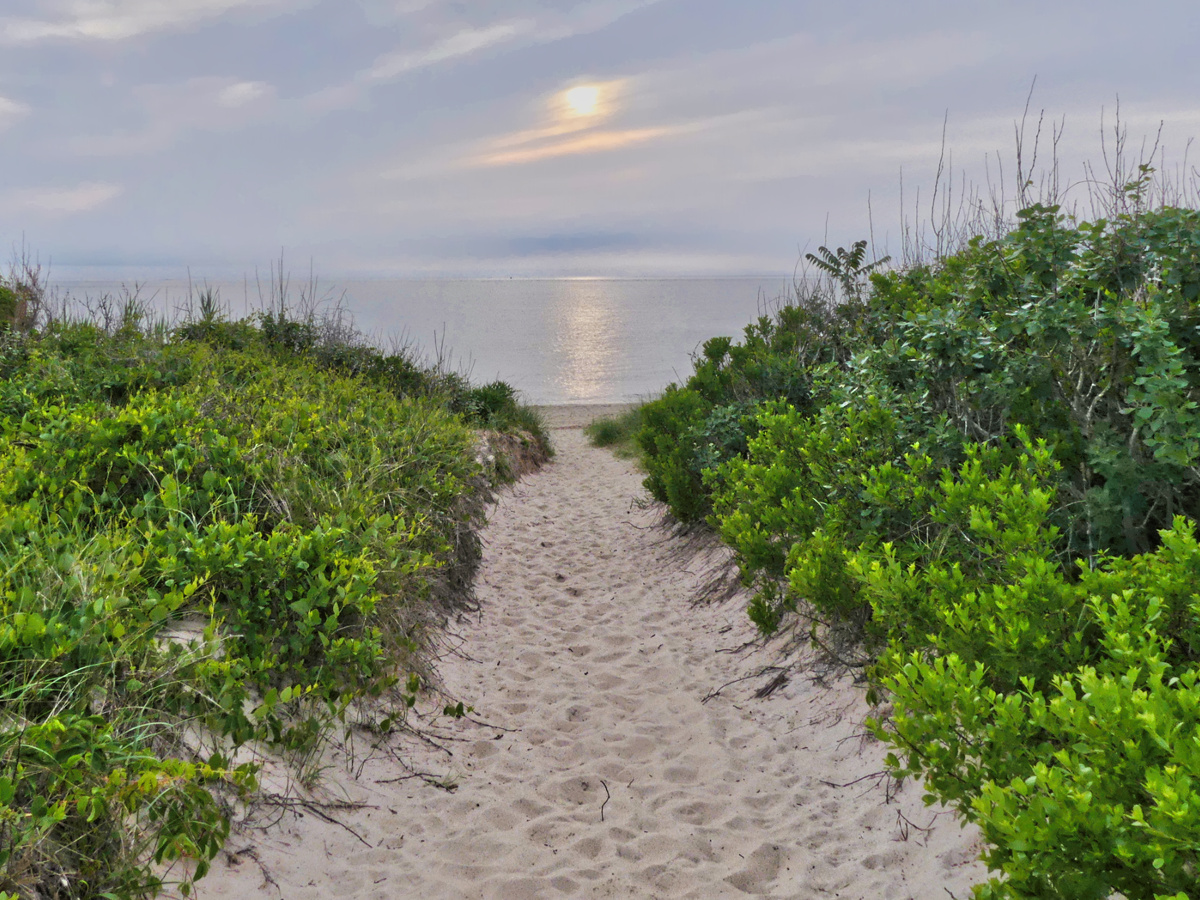
Holding out hope, we scanned the shore line with anticipation. A blot of discoloration in a wave crest caught my eye. Then another and another. The blots started pouring in …they were coming.
Females, many with males already attached, clamored and glided to the high water line of the beach to deposit their egg clusters. These attached pairs were not alone. Other unattached suitors huddled around mating pairs, awaiting opportunity. Soon, these huddles were replicated all along the shoreline.
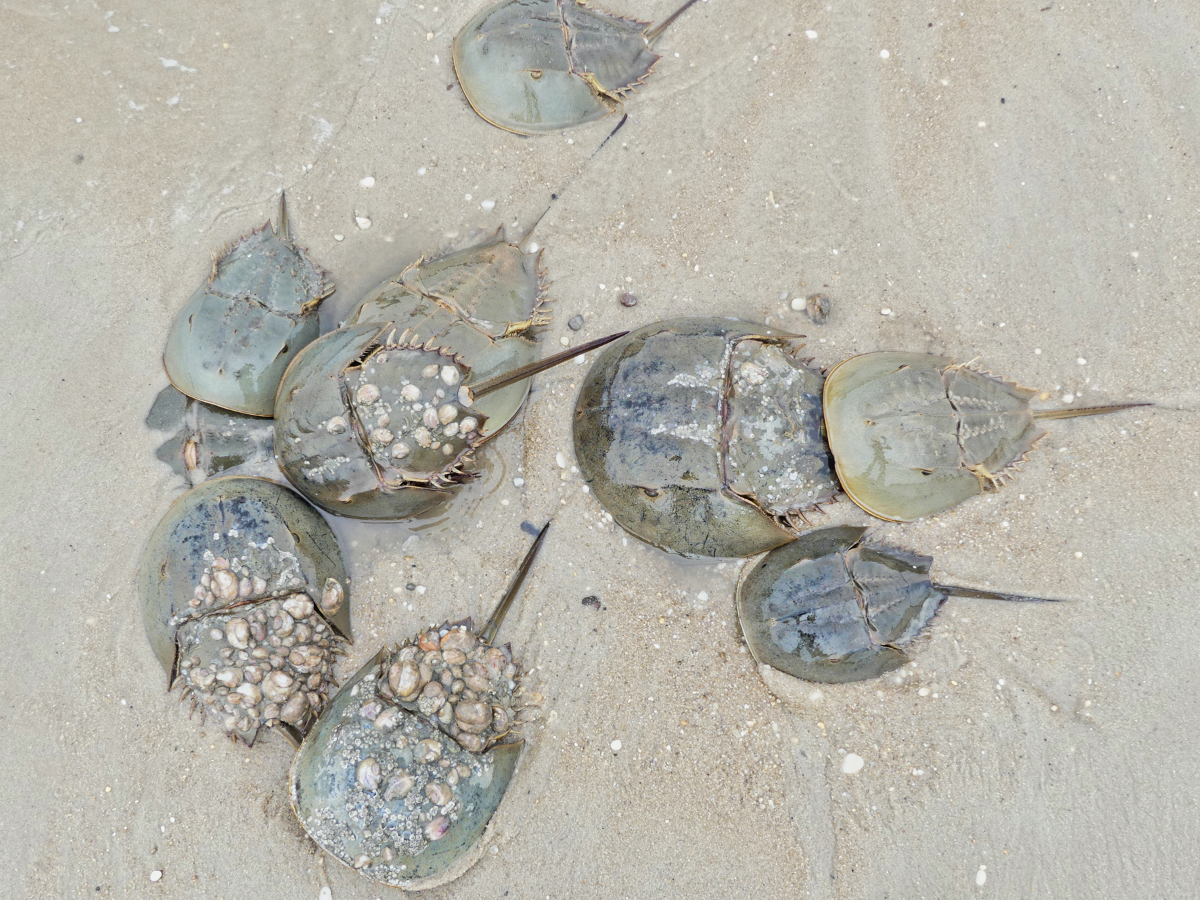
Mounds of living fossils assembled to the soundtrack of shells clopping like the drunken rhythm of wind chimes. The eruption of bizarre creatures tumbling in from the bay, to commence their primordial ritual, forcibly extracts you from preoccupation. If a dinosaur walked by, it would not be a distraction or feel out of place.
I felt privileged witnessing the display, to be let into this alien world without apprehension or objection from its native residents. I was a welcome intruder. It was exciting, that for a fleeting slice of time, this heavenly landscape seemed to exist only for the Horseshoes. It was their moment of triumph. For only a few hours at best, under the pull of an emerging full moon, these humble clumsy animals were absolutely majestic. Victory best describes the sensation.
Just Flip Em'
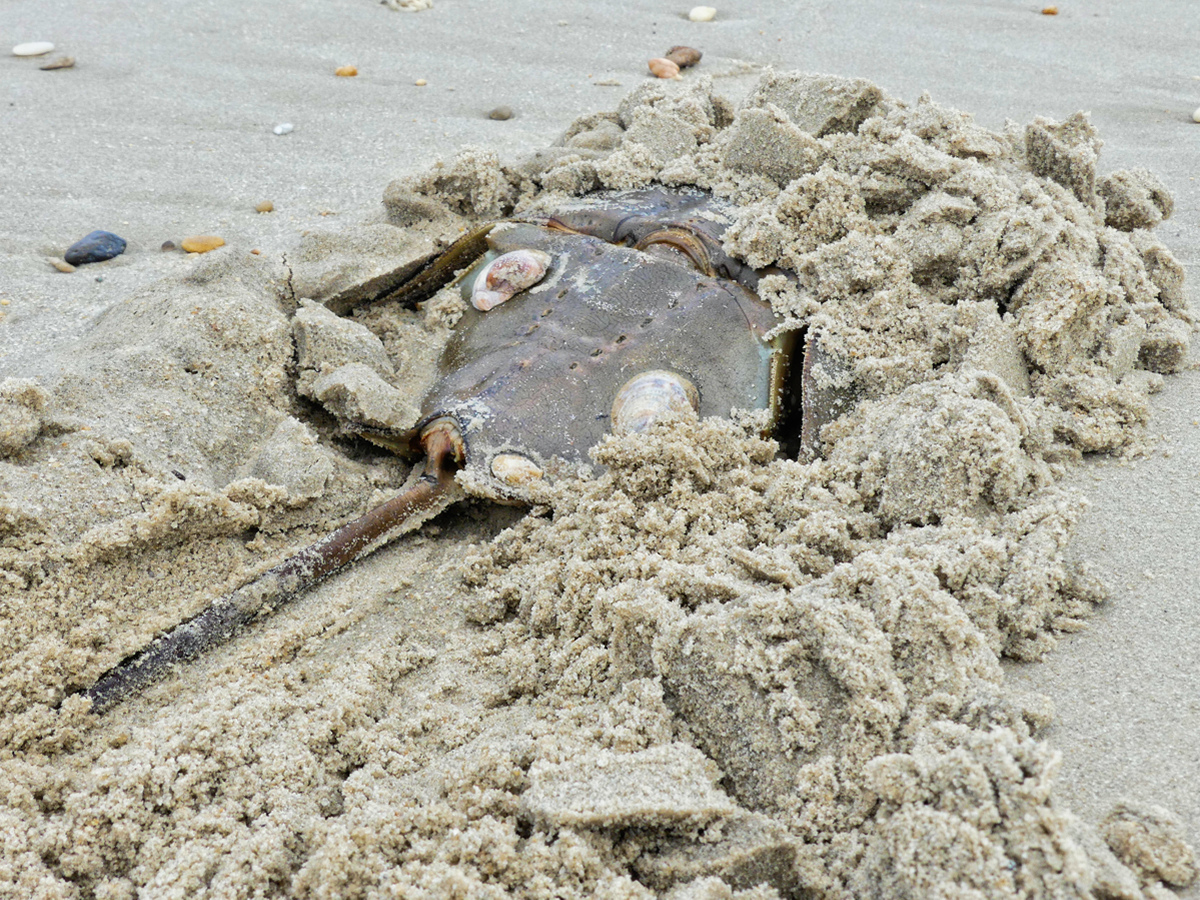
Unlike most wildlife encounters where you must be a restrained observer, you are actively encouraged to participate.
Horseshoe Crabs often flip over and though their tail is designed to help right themselves, it doesn’t always work. If an overturned crab fails to right itself before the tide recedes, if they miss their train, they become stranded and die.
It’s your job to Just Flip Em‘, as the official campaign is called. Simply flip them over by the side of their shell, NOT BY THEIR TAIL, and watch them make their way back to the water. You will find yourself having a good bit of fun patrolling the shoreline and flipping crabs in need. It takes nine to eleven years for a Horseshoe to reach sexual maturity, so every crab matters. It feels good, you serve a purpose, there is an instant benefit and an immediate gratification. Just Flip Em’.
If you want to make your outing more official and scientific, you can also Just Count em’. Tracking the population is of the utmost importance to conservation. The Atlantic States Marine Fisheries Commission with support from the U.S Geological Service, hosts twelve official survey nights each year. These take place along the Delaware and New Jersey coasts of the Delaware bay and volunteers are needed. Go HERE for more information on how to sign up.
Just going to witness and popularize the animal helps too. Unfortunately, ugly creatures do not get the same press or popular support as two and four legged cutie pies. By making the Horseshoe Crabs’ ritual one of yours, awareness is raised and simple appreciation can help to grease the wheels of conservation efforts.
FURTHER INFORMATION :
Just about everything you could want to know about Horseshoe Crabs.
Delaware Bay Horseshoe Crab Survey :
Get Involved by participating in the official survey. Sign up info, registration, locations etc.
Video on the Horseshoe Crab spawn.
Return the Favor , New Jersey :
Horseshoe conservation group. Lots of useful info., conservation updates and PDF fact sheets on all of the Horseshoe hotspot beaches on the New Jersey side of the Delaware Bay. Excellent resource.
If you decide to see the Horseshoe Crabs, you will likely also encounter a dizzying array of Shorebirds. This handy, compact and lightweight pocket guide allows the novice or seasoned birder to easily identify them without lugging around a complete field guide. This is the one that I carry.
Tide Charts:
Use the tide Charts to determine high and low tide for your best chance at viewing the Horseshoe Crab spawn.

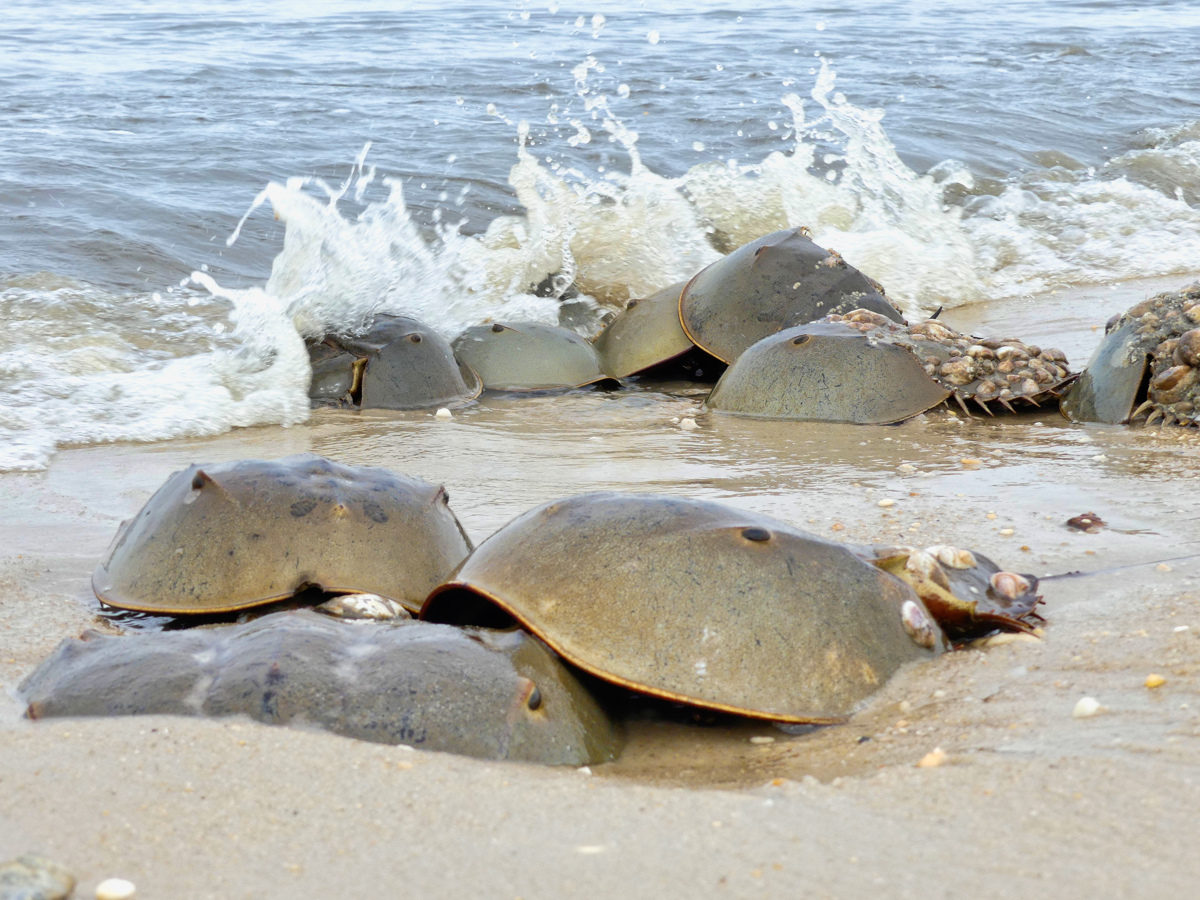
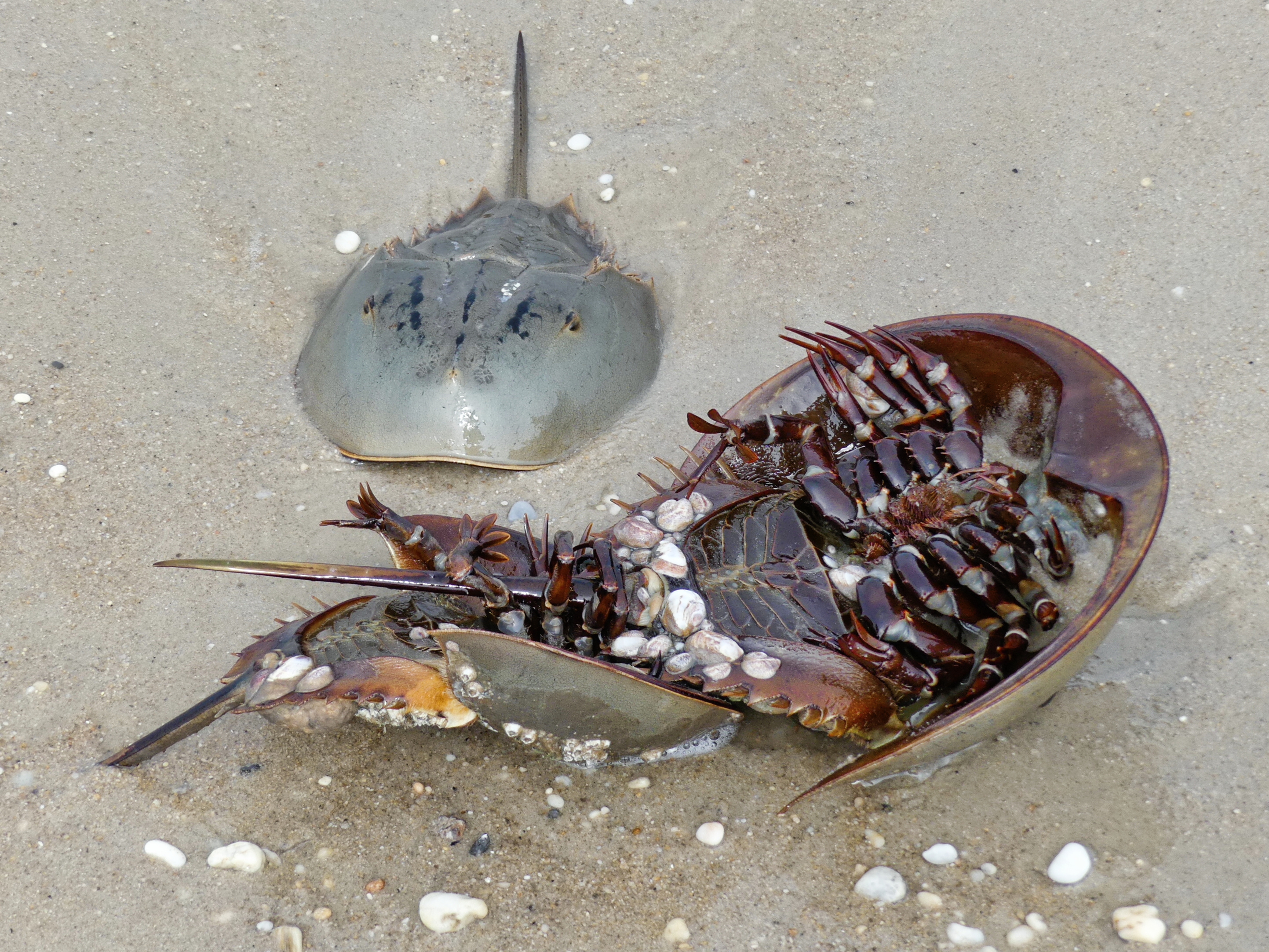
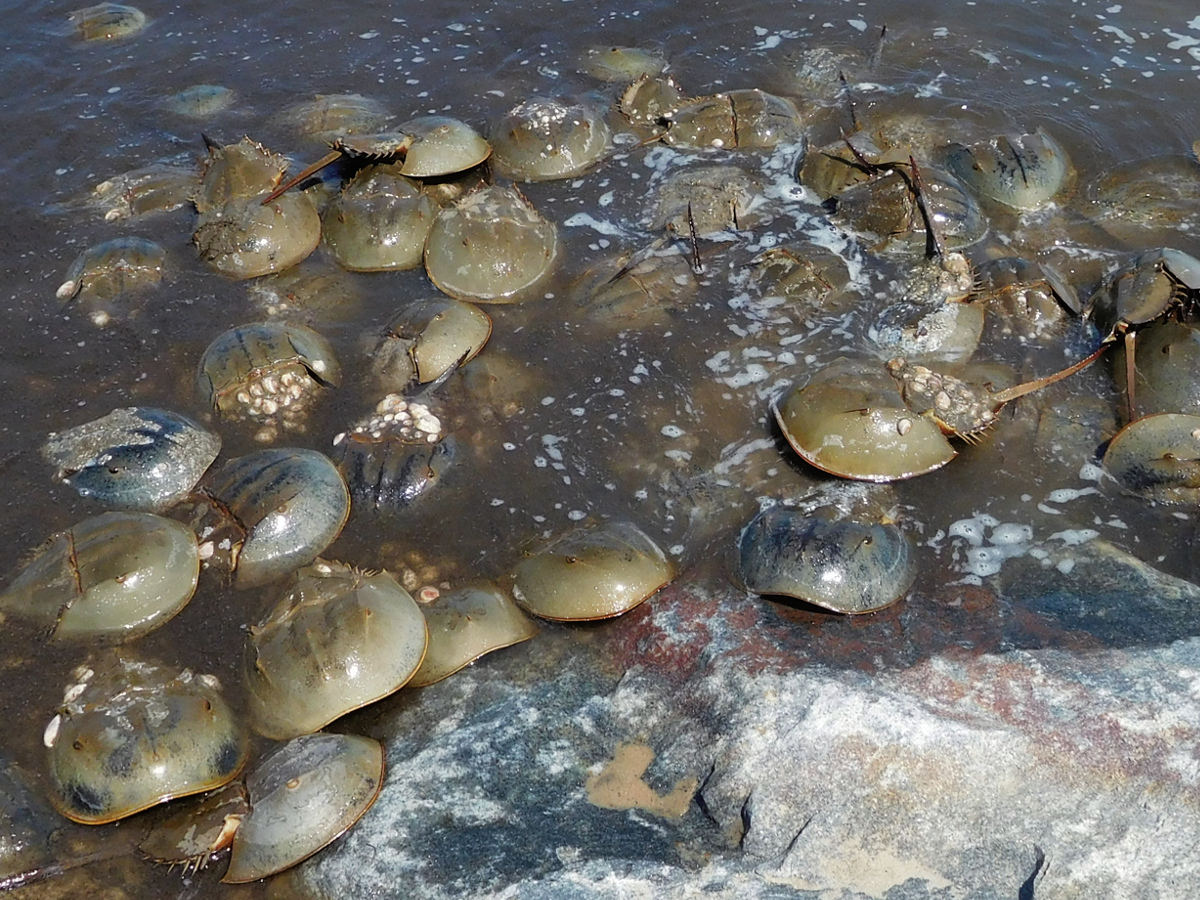
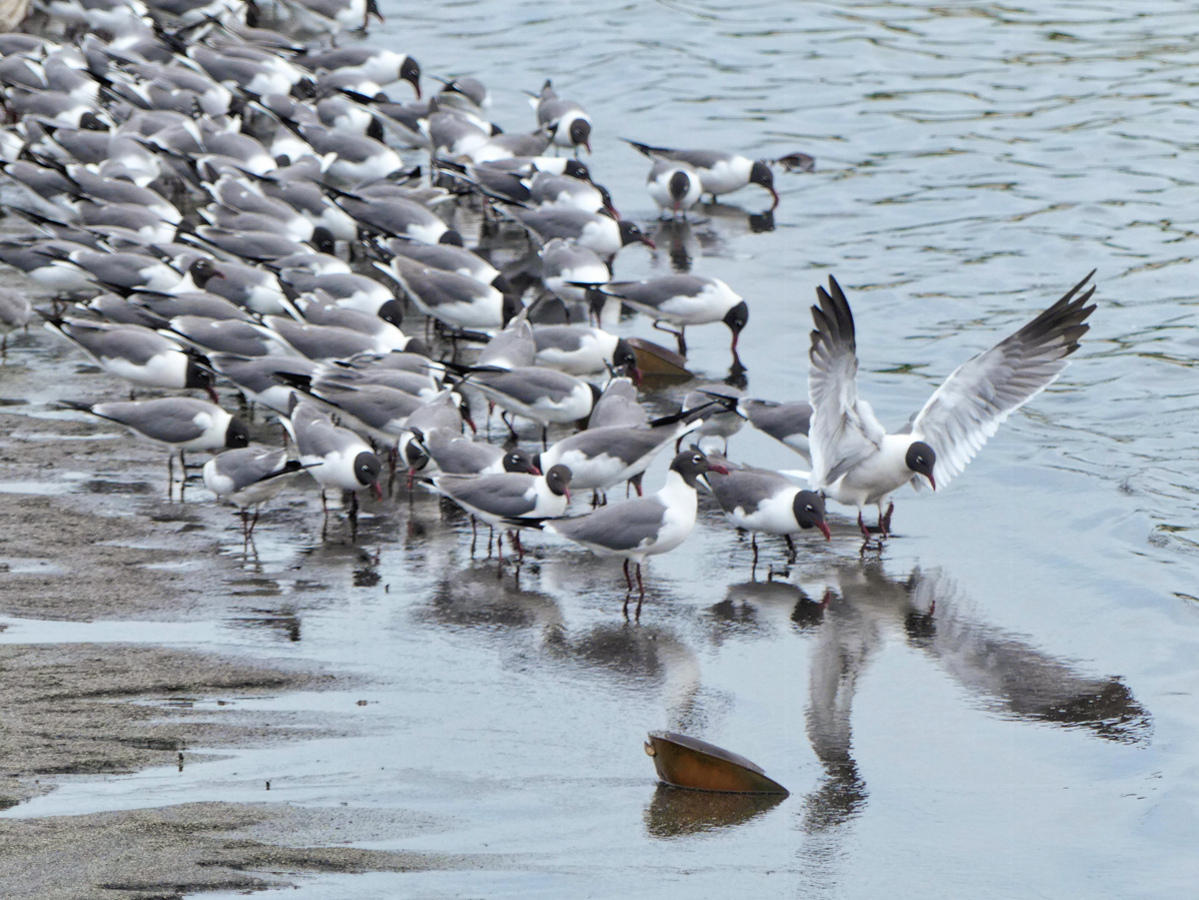

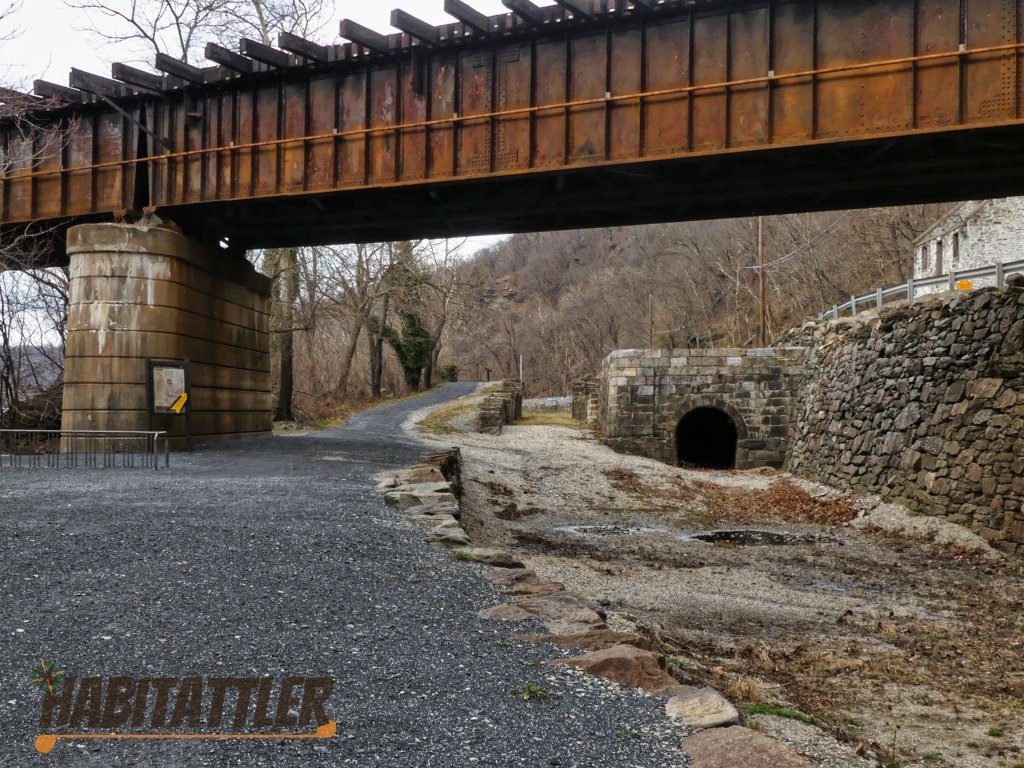
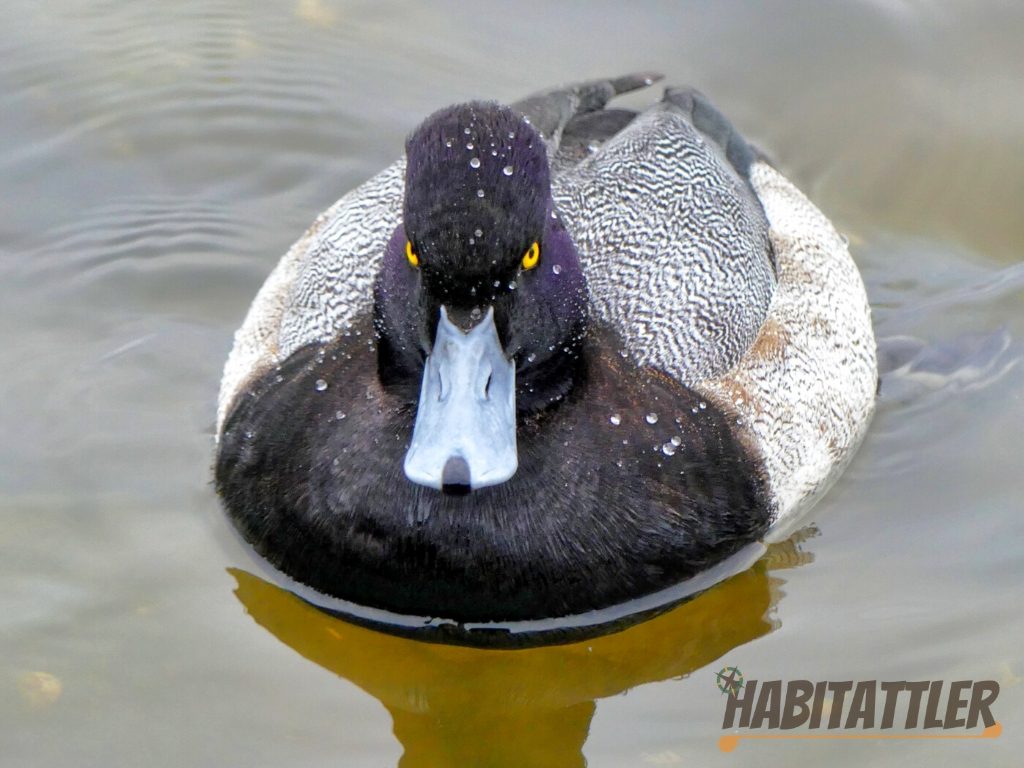
May 17, 2019 @ 2:17 pm
That was interesting. I really enjoyed reading it. Thank you.
May 19, 2019 @ 10:50 pm
Belinda, thank you so much.